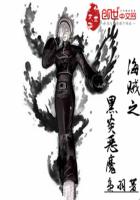What was only a sort of attempt with the Three-pronged Osmia--who, it is true, begins with females and ends with males, but muddles up the order and mixes the two ***es anyhow between the extreme points--becomes a regular law with her kinswoman. The mother occupies herself at the start with the stronger ***, the more necessary, the better-gifted, the female ***, to which she devotes the first flush of her laying and the fullness of her vigour; later, when she is perhaps already at the end of her strength, she bestows what remains of her maternal solicitude upon the weaker ***, the less-gifted, almost negligible male ***.
O. parvula, of whom I unfortunately possess but one series, repeats what the previous witness has just shown us. This series, one of nine cocoons, comprises five females followed by four males, without any mixing of the ***es.
Next to these disgorgers of honey and gleaners of pollen-dust, it would be well to consult other Hymenoptera, Wasps who devote themselves to the chase and pile their cells one after the other, in a row, showing the relative age of the cocoons. The brambles house several of these: Solenius vagus, who stores up Flies; Psen atratus, who provides her grubs with a heap of Plant-lice; Trypoxylon figulus, who feeds them with Spiders.
Solenius vagus digs her gallery in a bramble-stick that is lopped short, but still fresh and green. The house of this Fly-huntress, therefore, suffers from damp, as the sap enters, especially on the lower floors. This seems to me rather insanitary. To avoid the humidity, or for other reasons which escape me, the Solenius does not dig very far into her bramble-stump and consequently can stack but a small number of cells in it. A series of five cocoons gives me first four females and then one male; another series, also of five, contains first three females, with two males following. These are the most complete that I have for the moment.
I reckoned on the Black Psen, or Psen atratus, whose series are pretty long; it is a pity that they are nearly always greatly interfered with by a parasite called Ephialtes mediator. (Cf. "The Life of the Fly": chapter 2.--Translator's Note.) I obtained only three series free from gaps: one of eight cocoons, comprising only females; one of six, likewise consisting wholly of females; lastly, one of eight, formed exclusively of males. These instances seem to show that the Psen arranges her laying in a succession of females and a succession of males; but they tell us nothing of the relative order of the two series.
>From the Spider-huntress, Trypoxylon figulus, I learnt nothing decisive. She appeared to me to rove about from one bramble to the next, utilizing galleries which she has not dug herself. Not troubling to be economical with a lodging which it has cost her nothing to acquire, she carelessly builds a few partitions at very unequal heights, stuffs three or four compartments with Spiders and passes on to another bramble-stump, with no reason, so far as I know, for abandoning the first. Her cells, therefore, occur in series that are too short to give us any useful information.
This is all that the bramble-dwellers have to tell us; I have enumerated the list of the principal ones in my district. We will now look into some other Bees who arrange their cocoons in single files:
the Megachiles (Cf. Chapter 8 of the present volume.--Translator's Note.), who cut disks out of leaves and fashion the disks into thimble-shaped receptacles; the Anthidia (Cf. Chapters 9 and 10 of the present volume.--Translator's Note.), who weave their honey-wallets out of cotton-wool and arrange their cells one after the other in some cylindrical gallery. In most cases, the home is the produce of neither the one nor the other. A tunnel in the upright, earthy banks, the old work of some Anthophora, is the usual dwelling.
There is no great depth to these retreats; and all my searches, zealously prosecuted during a number of winters, procured me only series containing a small number of cocoons, four or five at most, often one alone. And, what is quite as serious, nearly all these series are spoilt by parasites and allow me to draw no well-founded deductions.
I remembered finding, at rare intervals, nests of both the Anthidium and the Megachile in the hollows of cut reeds. I thereupon installed some hives of a new kind on the sunniest walls of my enclosure. They consisted of stumps of the great reed of the south, open at one end, closed at the other by the natural knot and gathered into a sort of enormous pan-pipe, such as Polyphemus might have employed. The invitation was accepted: Osmiae, Anthidia and Megachiles came in fairly large numbers, especially the first, to benefit by the queer installation.
In this way I obtained some magnificent series of Anthidia and Megachiles, running up to a dozen. There was a melancholy side to this success. All my series, with not one exception, were ravaged by parasites. Those of the Megachile (M. sericans, FONSCOL), who fashions her goblets with robinia-, holm-, and terebinth-leaves, were inhabited by Coelioxys octodentata (A Parasitic Bee.--Translator's Note.); those of the Anthidium (A. florentinum, LATR.) were occupied by a Leucopsis. Both kinds were swarming with a colony of pigmy parasites whose name I have not yet been able to discover. In short, my pan-pipe hives, though very useful to me from other points of view, taught me nothing about the order of the ***es among the Leaf-cutters and the cotton-weavers.
I was more fortunate with three Osmiae (O. tricornis, LATR., O.















